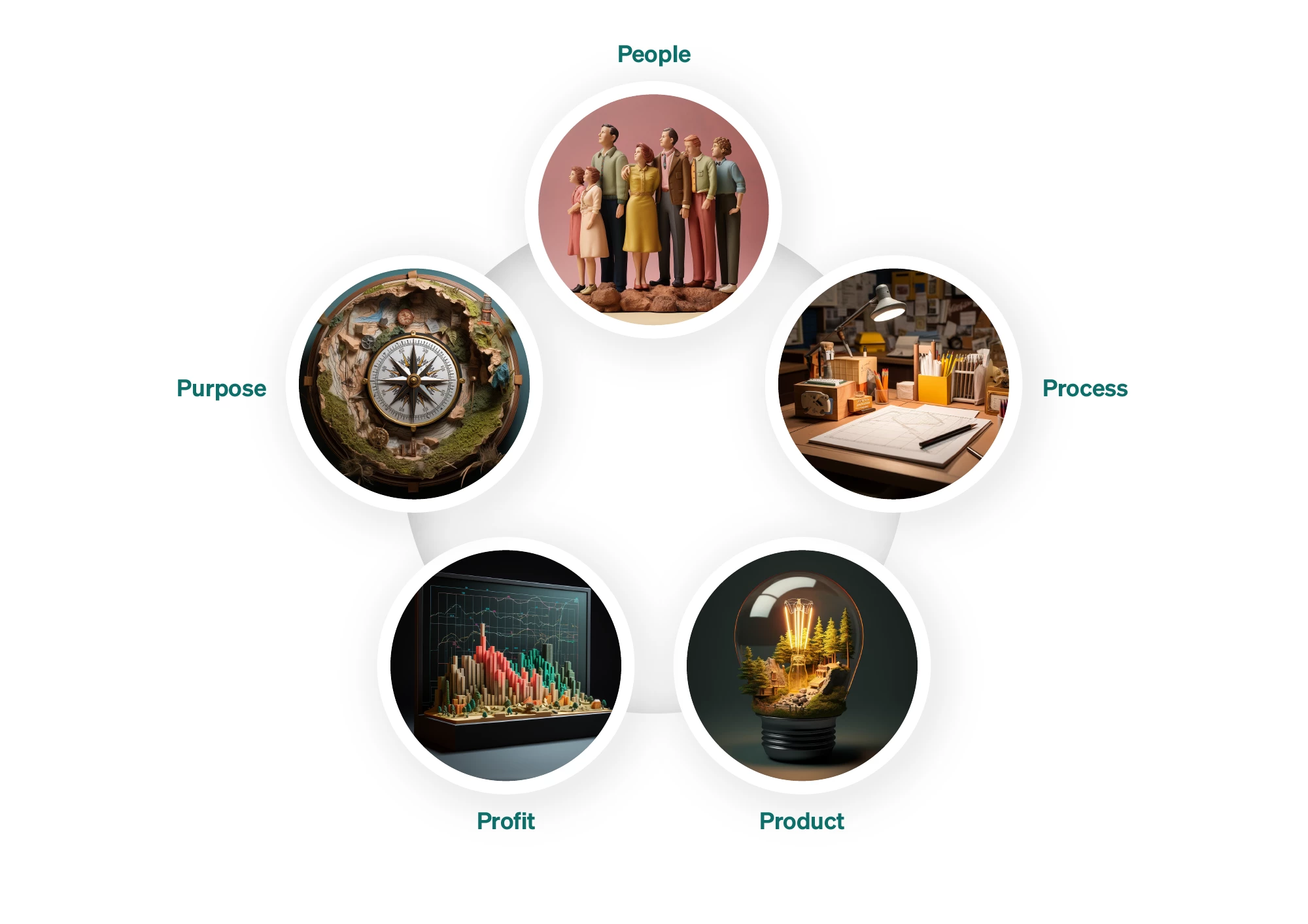85% of corporate executives say it is no longer acceptable for companies just to make money, they must also positively impact society. And 89% of executives believe that companies with purpose have a competitive advantage.
More companies are recognizing the importance of incorporating a mission or purpose into their work. People are also more likely to stay loyal to purpose-driven companies even through a misstep, and are more likely to want to work for companies with a mission.
But operating a mission-driven company is no easy task. There are challenges to overcome and a constant flow of decisions to make. As a purpose-driven agency, FiveStone encounters these challenges every day. We also walk alongside our clients as they navigate this tension. As our founder likes to say,
“I believe that profit and purpose can create a real tension that’s difficult to navigate, but only if we accept the assumption that these two things don’t go together.”
Jason Locy, FiveStone Founder
In partnership with our friend Steve Graves, we developed a framework called the 5 Ps. This framework guides us as we seek to operate a successful agency while striving towards a deeper purpose with our work. As the name implies, the 5 Ps focus on five different aspects of our work: People, Process, Product, Profit, and Purpose. (For a deeper explanation of the model, see this blog post.)

Creating a perfect balance between each P isn’t the goal (and is impossible anyway!). Instead, a tension will exist between each P that keeps us from skewing too far in any direction. The 5 Ps also help us stay true to ourselves.
The questions that follow offer a starting point for evaluating where your organization falls on each of the 5 Ps. It will be particularly helpful during points of inflection, like starting a new business or during times of transition. These questions can also be revisited to continue refining the balance between the Ps.
People
Do we acknowledge that our people have lives outside of work? Are we supporting them to become better spouses, parents, community members, etc.?
Do we have empathy for one another? Do we assume positive intent?
Are we overly focused on getting the most we can out of our people?
Do we treat those we work with transactionally or as true partners?
Do we bring out the best in one another, acknowledging and using each person’s gifts, skills, and perspective?
Process
Do we have the tools and guidelines we need to help us do our best work?
Are we helping our people operate in line with the ways they are wired?
Do the members of our team have a shared understanding of how we work?
Do we have a clear idea of when to use who based on their internal wiring, capacity, and other individual considerations?
Product
Is our work (both the final outcome and each step we take to get there) good? Specifically, is it:
Beautiful: Does the work call people to look past itself to something transcendent?
Beneficial: Have we contributed something meaningful to the world?
Lasting: Does the work impact people at their core, changing the way they see the world?
Does our work produce real value? Does it meet a need?
Profit
Are we focused on accumulating wealth or creating communities of wealth?
Are we able to continue operating our business?
Are we paying our employees fairly?
Do we recognize and invest in others spiritually and relationally, or only financially?
Purpose
Is our work responding to the needs of the world and creating healing? Or is it neutral, or even creating harm?
Are we directing our time, talents, and energy toward some positive good?
Individually, do we see our work as simply a way to make a living, or as a way to make the world a better place?
Is there a deeper meaning to the work we’re doing?
After reflecting on each of these questions, you’ve likely identified some areas where your organization is falling short. The point of this exercise isn’t to get discouraged, but to see each area as an opportunity to improve.
First, consider what tensions might be at play. For example, are you asking too much of your employees because you’re too focused on profit? Or is your less-than-ideal product an outcome of underdeveloped processes? Then consider how you might work towards a better balance, not overcorrecting to focus too heavily on any one element, but aiming to keep each of the 5 Ps in balance. Or, in cases where balance isn’t possible, make a deliberate choice to be off-balance if it’s only temporary or serves some greater good.
The FiveStone team is now part of Whiteboard.
Since 2001, we have worked with some of the most courageous organizations on the planet. We've walked alongside these organizations by offering strategy, branding, and campaigns to bring about positive change in the world.
As we think about how we might continue to live out our mission—“amplifying positive impact”—over the years ahead, we are excited to announce that we are joining forces with Whiteboard.
Whiteboard is an award-winning creative agency and Certified B-Corp. Like FiveStone, they believe in the power of Design to make the world a better place. It is clear to us that by bringing together the power of our strategic focus with their strong digital offering, we can truly build—as Whiteboard says—”the world that ought to be.”
We are thrilled to join Whiteboard and cannot wait to bring Whiteboard’s full suite of services and offerings to all our partners.
See more about Whiteboard here or visit the archived FiveStone site here.
